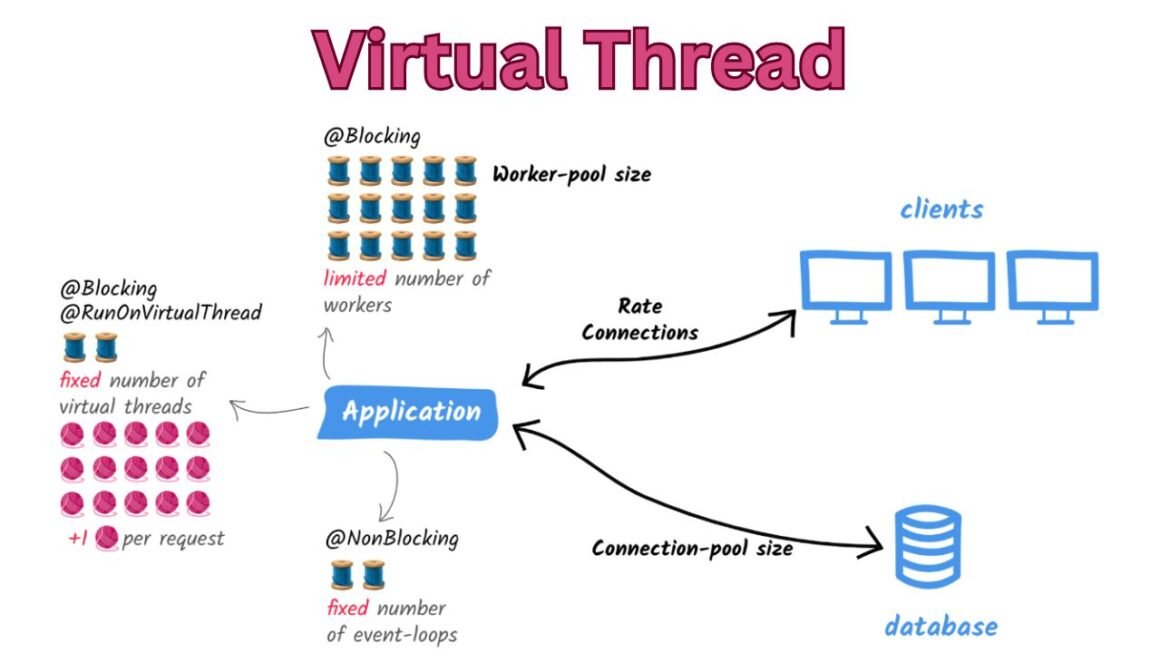In the realm of digital innovation, virtual threads have emerged as a pivotal concept, promising transformative changes in computing paradigms. However, amidst the buzz surrounding virtual thread performance, there lies a veil of confusion. This article aims to delve deep into the intricacies of virtual thread performance, debunking myths, and shedding light on the reality beneath the surface.
Understanding Virtual Threads
What are Virtual Threads?
Virtual threads, also known as lightweight threads or green threads, are threads managed entirely by a runtime library or virtual machine rather than the operating system. These threads enable concurrent execution within a single process, facilitating improved performance and resource utilization.
Benefits of Virtual Threads
Virtual threads offer numerous advantages, including enhanced scalability, reduced overhead, and increased responsiveness. By abstracting away the complexities of traditional operating system threads, virtual threads simplify concurrent programming and enable more efficient utilization of computing resources.
Exploring Performance Metrics
Key Performance Indicators (KPIs)
Throughput
Throughput refers to the rate at which a system completes tasks or processes within a given time frame. In the context of virtual thread performance, throughput metrics provide insights into the system’s efficiency in executing concurrent operations.
Latency
Latency measures the delay between initiating a request and receiving a response. Lower latency indicates faster response times, which are crucial for applications requiring real-time interactions. Evaluating latency metrics helps assess the responsiveness of systems utilizing virtual threads.
Optimizing Virtual Thread Performance
Best Practices
Asynchronous Programming
Utilizing asynchronous programming paradigms, such as asynchronous I/O and event-driven architectures, can significantly enhance virtual thread performance. By leveraging non-blocking operations, applications can achieve greater concurrency and responsiveness.
Thread Pool Management
Efficient management of thread pools is essential for maximizing virtual thread performance. Implementing dynamic thread pool sizing strategies based on workload demands helps optimize resource utilization and minimize overhead.
Addressing Common Misconceptions
Myth: Virtual Threads Are Always Lightweight
While virtual threads are designed to be lightweight in terms of resource consumption, their actual performance characteristics may vary depending on the underlying runtime environment and implementation.
Myth: Virtual Threads Eliminate Concurrency Challenges
While virtual threads simplify concurrent programming to some extent, they do not entirely eliminate concurrency challenges such as race conditions and deadlock. Developers must still adhere to best practices and synchronization mechanisms to ensure thread safety.
FAQs
What are the primary advantages of virtual threads?
Virtual threads offer benefits such as improved scalability, reduced overhead, and increased responsiveness compared to traditional operating system threads.
How do virtual threads differ from native threads?
Unlike native threads, which are managed by the operating system kernel, virtual threads are managed entirely by a runtime library or virtual machine, resulting in greater flexibility and efficiency.
What role does asynchronous programming play in optimizing virtual thread performance?
Asynchronous programming enables applications to achieve greater concurrency and responsiveness by leveraging non-blocking I/O operations and event-driven architectures.
Are virtual threads immune to concurrency challenges?
While virtual threads simplify concurrent programming, they do not eliminate concurrency challenges such as race conditions and deadlock. Developers must still employ proper synchronization mechanisms to ensure thread safety.
How can I optimize virtual thread performance in my applications?
Optimizing virtual thread performance involves implementing best practices such as asynchronous programming, efficient thread pool management, and careful consideration of concurrency challenges.
What factors should I consider when evaluating virtual thread performance?
Key performance indicators such as throughput, latency, and resource utilization are essential factors to consider when assessing virtual thread performance.
Conclusion
In conclusion, demystifying virtual thread performance requires a nuanced understanding of their underlying principles, performance metrics, and optimization strategies. By dispelling common misconceptions and embracing best practices, developers can harness the full potential of virtual threads to build scalable, responsive, and efficient applications.



